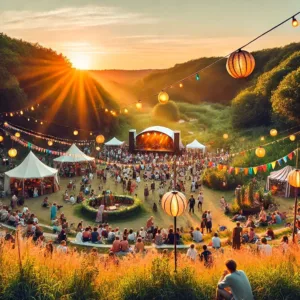Doha – “In Fez, there is no escaping the past — not that you would want to,” writes Catherine Garcia of The Week US in her recent article about Fez, Morocco’s oldest imperial city and cultural capital.
Garcia takes readers on a virtual tour of this enchanting city, highlighting its rich history, vibrant culture, and unique attractions.
The heart of Fez is its ancient medina, also known as Fez el Bali. Dating back to the 9th century, this walled quarter is the world’s largest car-free urban area.
Quoting the travel guide publisher Lonely Planet, Garcia described the medina as offering visitors a “rare opportunity to see how many distinctly Moroccan treasures, from fine leather to copper pots, are made.”
One of the most iconic spots in the medina is the Chaouwara Tannery, believed to be the oldest operating tannery in the world. Garcia describes the experience of watching the workers from the balconies above: “It’s striking to see the hard physical labor.”
Fez is home to several architectural marvels, including madrasas (Islamic schools) and the Royal Palace.
The Medersa Bou Inania, completed in the 14th century, is a prime example of Marinid architecture. Visitors can admire its intricate geometric tile work, stucco carvings, and green roof from the courtyard.
Another architectural gem is the Al-Attarine Medersa, known for its “dazzling example of intricate Islamic design,” as described by Atlas Obscura.
Read also: 2030 World Cup: Morocco Unveils Plan to Upgrade Fez’s Infrastructure
Moroccan cuisine is a delightful blend of Arab, Amazigh, Mediterranean, and Andalusian influences. “People often think that Moroccan food is just tagine and couscous,” Tasting Marrakech owner Mandy Sinclair told The Sunday Times, “but it is hugely diverse.”
Garcia recommends trying essential dishes like b’stilla, a flaky pastry pie, and khobz, bread made from semolina flour. For a unique dining experience, she suggests Nur, a cutting-edge restaurant that offers a carefully crafted 10-dish tasting menu using local ingredients.
Fez offers a range of accommodation options, including traditional riads that showcase Moorish architecture.
Dar Seffarine, a 600-year-old restored house, and Palais Amani, which presents “pure, unadulterated Moroccan opulence,” are among the top recommendations by The Telegraph and The Independent, respectively.
Fez is a city where the past comes alive, Garcia concludes, noting that the imperial city invites visitors to immerse themselves in its rich history and vibrant culture. Her article serves as an enticing introduction to this Moroccan gem, leaving readers eager to experience its wonders firsthand.
















